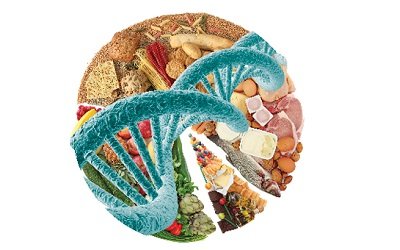Inside BENEO’s new pulse plant: pioneering sustainable protein from faba beans
Biotechnology has evolved over the past 20 years from intellectually intriguing biosciences into a diversifying industries which produce useful biologicals from biocatalytic reactions to genetically modified bacteria, fungi, viruses, and plant, mammalian, and insect cells. Some advancement modifies the genetic composition and expression of genes; others accelerate and adjust metabolic processes. In bioengineering sectors in particular, significant developments have been achieved in the expansion from laboratory to factory scale, and in technologies for the isolation, purification, and sterilisation of end products. The creation of reliable systems of product quality and process control has been equally successful.
Biotechnology has been used for over past 8,000 years in the manufacture of food products: its examples include bread, alcoholic beverages, cheese, yoghurt, vinegar, and other foodstuffs produced using the enzymes inherent in various microorganisms. Although these techniques are still used, the cultures that were used in ancient times have been modified to provide high-quality products with increased yield. In recent years new techniques have become available and these forms of modern biotechnology are commonly referred to as ‘genetic engineering’ or, from the scientific perspective, ‘recombinant DNA technology.’
Several genetically modified crops, including rice, potatoes, oilseeds, and cassava, with elevated levels of essential nutrients (such as Vitamin A, iron, zinc, protein and essential amino acids, and essential fatty acids), reduced levels of anti-nutritional factors (such as cyanogens, phytates, and glycoalkaloid), and increased levels of factors that influence bioavailability and utilisation of essential nutrients (such as cysteine residues), are advancing through field trial stage and regulatory processes toward commercialisation. The successful introduction of these biofortified crops would have a significant impact in reducing malnutrition and the risk of chronic disease in developing countries.
Earlier research and development processes of extracting, screening, and chemically modifying natural biochemical substances targeted the identification of disease-causing mechanisms and their prevention or cure. Today’s molecular modelling and combinatorial biochemistry aim to design and synthesise more effective diagnostics, prophylactics, and therapeutics tools.
In the past, an organic chemist hoped to synthesise 50-100 new compounds in a year, but today with the help of computer-assisted modern biochemistry and software a company can generate several thousand molecules and screen them against a target protein every 6 months. Rapid biological screenings are extensively employed, using membranes from human or animal organ cells grown in tissue culture. Diagnostic processes including immunogenicity have been accelerated by the introduction of molecular modelling and wide arrays of microchip analyses.
Recent addition of ‘omics’ tools to the bioscience lexicon include ‘Genomics’— the study of genomes and DNA nucleotide sequences; ‘Proteomics’ — related to specific proteins produced by genomes; ‘Metabolomics’ — the influence of gene expression on metabolites; ‘Transcriptomics’ — profiling gene expressions using DNA/RNA microassays. These have paved the way for an unparallel understanding of the molecular functioning of the human body that will ultimately transform medical and nutritional practices.
The recent development of nanotechnology and its application has revolutionised the entire chain of food and nutrition, particularly in the field of delivery and packaging systems. Reported benefits of the new biotechnologies include reduced environmental damage and improvement in animal welfare, farm productivity, product quality, and human health, but there still seems to be hesitancy in the adoption of such technologies by farmers and by food companies.
Following areas are chosen where modern biotechnology has immense impact:
1. Bioactive peptides processed by proteases or microbes
2. Functional lipids or acylated products processed by lipase
3. Functional PUFAs by fermentation
4. Production of nutriments and phyto-ingredients by genetically engineered bacteria
5. Application of micro-RNA (miRNAs) in regenerative nutraceutical and functional foods
6. Encapsulation: an efficient stabilisation and delivery technology of high-efficient nutraceutical and functional foods
7. Application of wide-range of supercritical extraction and fractionation technologies for clean, pure, less-toxic and high efficient products
8. Nanonisation of nutraceutical and functional foods to enhance bioactivity
It has been argued that biotechnology as such is neither good nor bad, and has the potential to alleviate or aggravate the impact of agriculture on the environment, to improve human and animal nutrition or to pose danger to human or animal health. The production of pharmaceuticals with recombinant DNA technology has enjoyed significant success with minimum controversy. However, the use of recombinant DNA-modified plant for foods, feed, and environmental applications and nanotechnology has not fared so well. The challenge is thus to develop, supply, and manage biotechnology for the benefit of humankind and the environment. The following suggestions have been proposed to tackle this challenge.
• Promote research and market development for life sciences and biotechnology applications and the knowledge-based bioeconomy.
• Foster competitiveness, knowledge transfer, and innovation from the science base to industry.
• Encourage informed societal debates on the benefits and risk of life sciences and biotechnology.
• Ensure a sustainable contribution of modern biotechnology to agriculture.
• Improve the implementation of the legislation and its impact on competitiveness.

